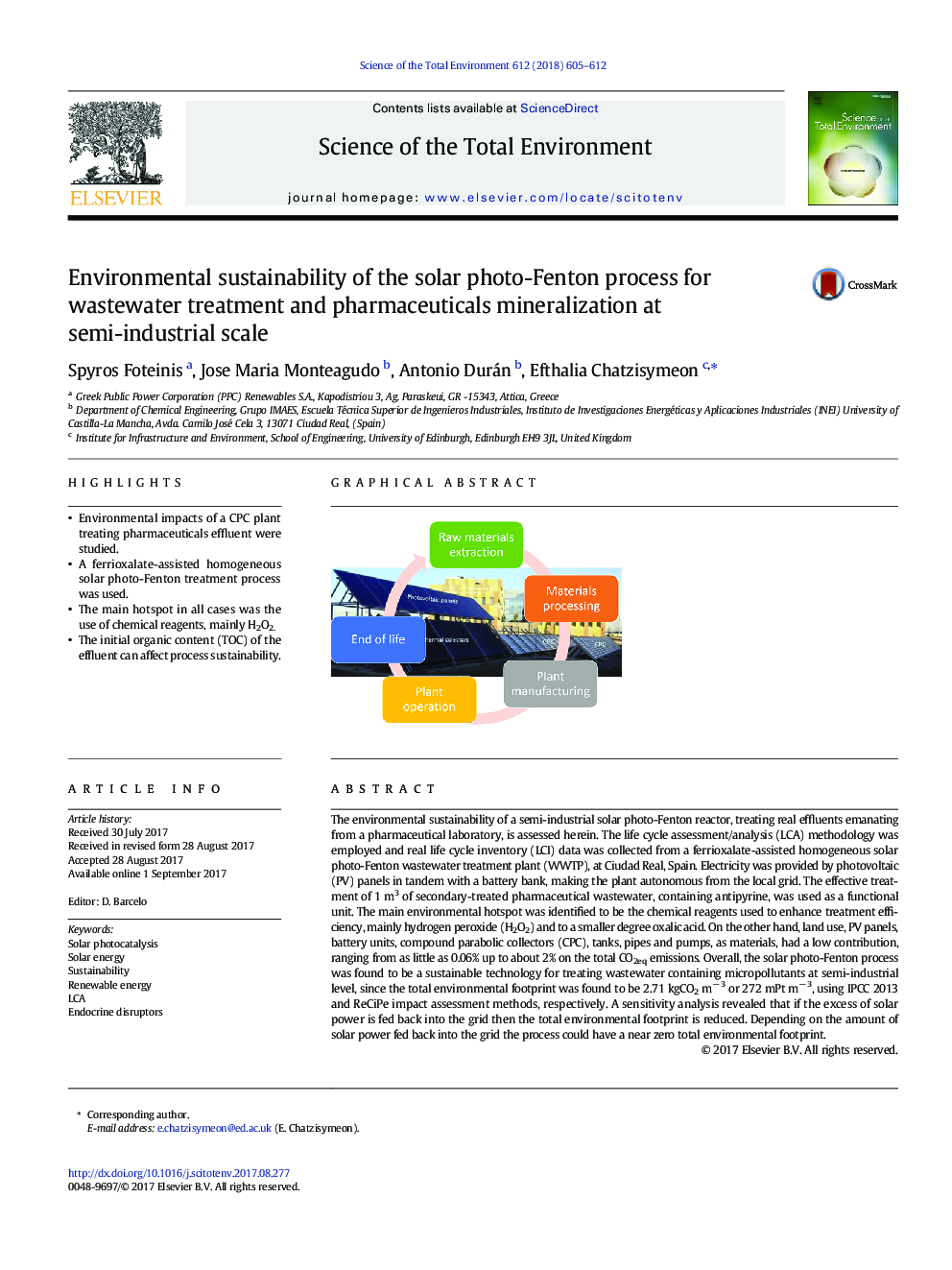| کد مقاله | کد نشریه | سال انتشار | مقاله انگلیسی | نسخه تمام متن |
|---|---|---|---|---|
| 5749917 | 1619691 | 2018 | 8 صفحه PDF | دانلود رایگان |
- Environmental impacts of a CPC plant treating pharmaceuticals effluent were studied.
- A ferrioxalate-assisted homogeneous solar photo-Fenton treatment process was used.
- The main hotspot in all cases was the use of chemical reagents, mainly H2O2.
- The initial organic content (TOC) of the effluent can affect process sustainability.
The environmental sustainability of a semi-industrial solar photo-Fenton reactor, treating real effluents emanating from a pharmaceutical laboratory, is assessed herein. The life cycle assessment/analysis (LCA) methodology was employed and real life cycle inventory (LCI) data was collected from a ferrioxalate-assisted homogeneous solar photo-Fenton wastewater treatment plant (WWTP), at Ciudad Real, Spain. Electricity was provided by photovoltaic (PV) panels in tandem with a battery bank, making the plant autonomous from the local grid. The effective treatment of 1 m3 of secondary-treated pharmaceutical wastewater, containing antipyrine, was used as a functional unit. The main environmental hotspot was identified to be the chemical reagents used to enhance treatment efficiency, mainly hydrogen peroxide (H2O2) and to a smaller degree oxalic acid. On the other hand, land use, PV panels, battery units, compound parabolic collectors (CPC), tanks, pipes and pumps, as materials, had a low contribution, ranging from as little as 0.06% up to about 2% on the total CO2eq emissions. Overall, the solar photo-Fenton process was found to be a sustainable technology for treating wastewater containing micropollutants at semi-industrial level, since the total environmental footprint was found to be 2.71 kgCO2 mâ 3 or 272 mPt mâ 3, using IPCC 2013 and ReCiPe impact assessment methods, respectively. A sensitivity analysis revealed that if the excess of solar power is fed back into the grid then the total environmental footprint is reduced. Depending on the amount of solar power fed back into the grid the process could have a near zero total environmental footprint.
93
Journal: Science of The Total Environment - Volume 612, 15 January 2018, Pages 605-612
